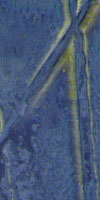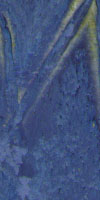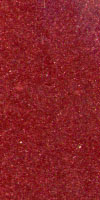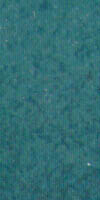
Cone 6 Iron Reds | Matte Bases | Glossy Bases | Honey Transparents | Floating Blues | PV Clay - Cone 06 Raku | LowFire Clear
Transparent Gerstley Borate Cone 6 Glazes
These pages were a study of how we substituted Boraq 1, Boraq 2 and Boraq 3 into common recipes.
Boraq was developed by Plainsman Clays as a substitute for Gerstley Borate (under code number L3127E).
The development effort took place during the early 2000s, the initial period when the demise of Gerstley Borate appeared imminent.
Other companies, including Laguna Clays, introduced similar products at the time.
Later Laguna Clays began processing a last stockpile of the material they found at the mine and interest in substitutes waned.
In 2023 the cycle appears set to repeat so these pages are pertinent again.
This glaze G2826A 50:30:20 GB:silica:kaolin base (likely also for variegation). These two cone 5 porcelain tiles show it with a mix of
2% cobalt and 2% chrome. Results are virtually identical.
Like the above, G2826R Floating Blue, is also based on a 50:30:20 base recipe
(but it is Npeheline:GB:Silica instead). The Boraq 2 version (on the right) fires exactly the same.


General Purpose Transparent Overglaze
This glaze uses a little more than half as much GB and therefore has a much
lower boron content (and is not quite as glossy). It also uses whiting, kaolin
and silica but has a higher Na2O content and sources it from nepheline syenite.
It was tested over brushed-on metal oxide decoration (using a variety of stains
including green, black,
blue, brown, red, yellow), all colors fired exactly the same using the
Boraq version. The character of the transparent glass is also the same over dark
or light clay bodies.
2826t
Patti's Clear with Gerstley Borate |
2826t1
Patti's Clear with Boraq 2 |
|
|
|
|
|
Base for Use With Chrome Tin Colors
This glaze uses only one quarter as much GB as the first one. Like the second
it is made using nepheline syenite, whiting, kaolin and silica; it is a well known cone 6 recipe called Cranberry.
This variation employs 7.5 tin
oxide and 0.5 chrome oxide (however chrome tin stains are also used). Notice
that this one has a lot less boron than the above yet it is still quite glossy
and striking and even tends to flow a little if applied thickly. The
Boraq version is not shown, it is identical. Boraq 1 breaks to a lighter color when
the glaze thins on edges, Boraq 2 creates a more stable melt. This recipe is
interesting in that it creates a variegated surface that does not rely on high
melt fluidity.
2826s
Cranberry with Gerstley Borate |
2826s1
Cranberry with Boraq 2 |
|
|

|
|
|
By Tony Hansen
Follow me on
                        |  |














